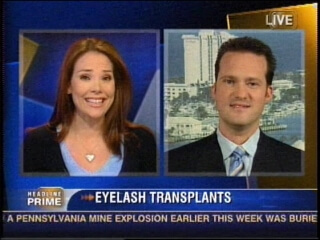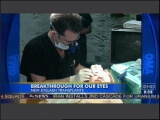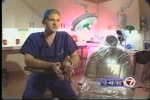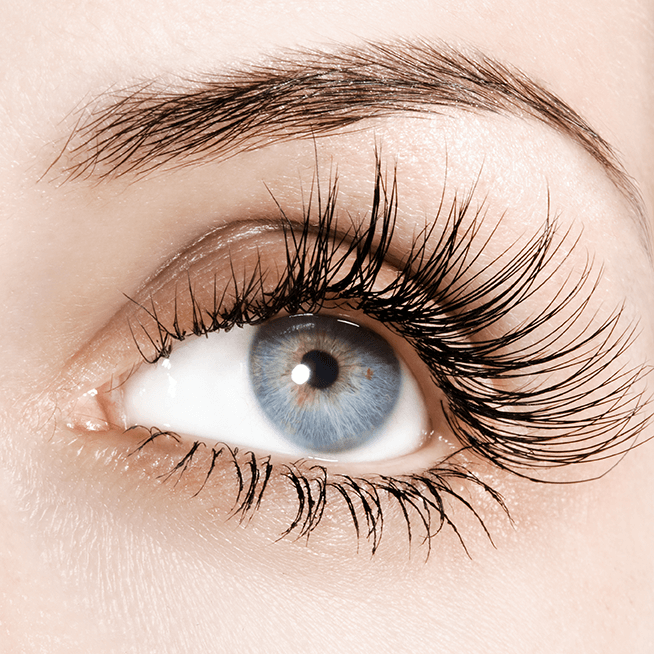EYELASH TRANSPLANTS IN NEWSWEEK MAGAZINE
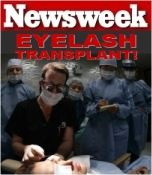 Dr. Bauman’s Eyelash Transplants featured in Newsweek magazine, complete with photo gallery.
Dr. Bauman’s Eyelash Transplants featured in Newsweek magazine, complete with photo gallery.
Nov. 17, 2006 – Ever since she was a child, Alevé Loh, a 30-year-old marketing manager in Los Angeles, wanted thicker eyelashes. “I’m half Asian and I’ve got those Asian eyelashes, very short and straight. My best friend always had amazing huge, big eyelashes. I was like ‘I want those!’” Download eyelash-transplant-bauman-newsweek.pdf (205.9K)READ MORE
![]()
![]()
NEWSWEEK: Eyelash Transplants
 Eyelash Transplants Grow in Popularity
Eyelash Transplants Grow in Popularity
Nov. 17, 2006 – Ever since she was a child, Alevé Loh, a 30-year-old marketing manager in Los Angeles, wanted thicker eyelashes. “I’m half Asian and I’ve got those Asian eyelashes, very short and straight. My best friend always had amazing huge, big eyelashes. I was like ‘I want those!’”
Loh’s dream became a reality recently when she underwent a procedure that could become the next “must have” in cosmetic surgery—an eyelash transplant. Though they’ve been around for more than a decade as a way to help burn victims, doctors say more and more healthy patients are seeking transplants in pursuit of that elusive Garboesque gaze. “There’s been a virtual explosion of these surgeries for cosmetic purposes,” says Dr. Alan Bauman, a surgeon in Boca Raton, Fla., who has been performing the procedure for seven years. “In the past four or five months I’ve had about 100 inquiries about cosmetic eyelash enhancement. A couple years ago we were doing maybe one a month.”
Surgeons begin the procedure by harvesting a fingertip-size patch of hair from the back of the scalp. Then they isolate individual hair follicles and implant them on the top lid. Anywhere from 10 to 50 lashes can be implanted per lid, using a variety of techniques. “The technique I use is double implantation,” says Bauman. “With each stroke we implant two follicles, which doubles the number of lashes implantable per session.” Patients receive local anesthesia and are sedated but awake throughout the procedure.
Side effects can include some postop soreness and puffy lids (doctors inject the lid with saline in order to increase the surface area for surgery) and scarring. And as with any surgery, infection is also a risk. Because it’s such a rare procedure, there are not many case studies, so doctors say there’s no way to tell exactly how each new patient’s eyelids will react.
One well-known side effect, however, is the need for regular grooming. Like the hair on your head, the new eyelashes continue to grow after implantation, so patients have to trim them every few weeks to maintain an appropriate length. They also need to curl them. “Eyelashes have to curl away from your eye,” says Dr. Sara Wasserbauer, a hair transplant surgeon in Walnut Creek, Calif. “If you were to let them grow long and they didn’t curl away, they could theoretically grow into your eye and cause vision problems.”
Transplant recipients don’t seem to mind. “Well, I pluck my eyebrows and get my hair cut, so it’s kind of not that different,” Loh explains. But, she acknowledges, other people don’t share her enthusiasm. “Whenever I tell people [about the surgery], that’s the thing that freaks them out.” Catherine Valentine, 54, an attorney in California who had the procedure last month, says the effort is worth the payoff. “Once you get your eyelashes back, your eyes stand out more. It gives them definition.”
Currently, fewer than eight surgeons in the United States regularly perform eyelash transplants, which can cost as much as $3,000 per lid. But more doctors are learning the procedure to meet growing demand. “A guy who specializes in liposuction called me last week and offered me a small fortune to teach him eyelid transplant surgery,” says Wasserbauer. She turned him down because hair transplant is a demanding specialty. It’s not for everyone, and neither are eyelashes that require maintenance.
URL: https://www.msnbc.msn.com/id/15768086/site/newsweek/
Newsweek PHOTO GALLERY
Dr. Bauman’s Eyelash Transplant Information
![]()
READ MORE
![]()
![]()



 Dr. Alan J. Bauman, M.D.Hair Loss & Hair Transplant ExpertBoca Raton, FL
Dr. Alan J. Bauman, M.D.Hair Loss & Hair Transplant ExpertBoca Raton, FL
